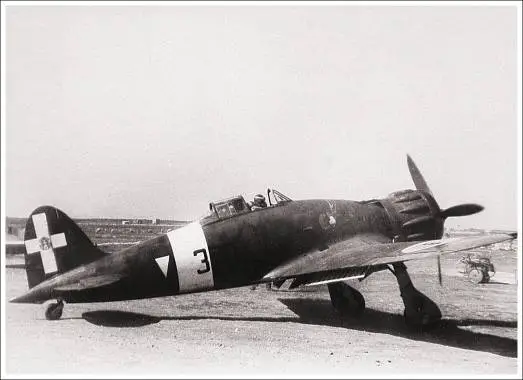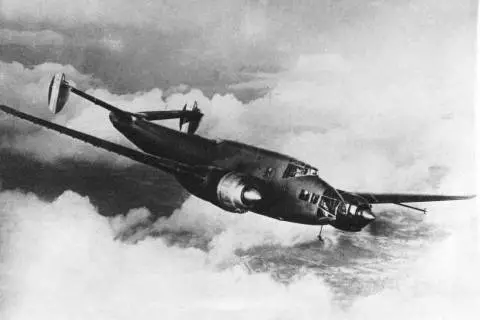Opposing Sides
On the 10th June 1940, Benito Mussolini pulled Italy into the tragedy of the Second World War, declaring war on the United Kingdom and France. France was already close to the collapse, due to the German successes and Mussolini sought to exploit this favorable situation by dragging Italy into a war that seemed nearly over. Italian armed forces were not ready to fight this new war, they were in a re-organization and re-equipment process that was meant to end in 1942. The Regia Aeronautica was adopting its first monoplane fighters, the Macchi M.C. 200 and the Fiat G.50 while most of the other aircraft were the same as in the Spanish Civil War. A third new aircraft, born out of the Spanish experience, was the new biplane fighter Fiat C.R.42, an aeroplane already outdated since its designing phase. However, in June 1940, the C.R. 42 formed the bulk (140 aircraft) of Italian fighter squadrons deployed on the Western/Alpine front against France. Besides that, the Regia Aeronautica could rely on 83 C.R.32 fighters, 350 S.M.79 and 117 B.R.20 bombers. There were also miscellaneous types of recognisance aeroplanes, few Breda 65 ground attack bombers and 142 trimotors of the types S.M.81, Cant Z.506 and Cant.Z.1007.

Macchi M.C. 200
On the other side of the Alps, the Armée de l’Air could count on a hundred fighters M.B.151, an unclear number of Morane Saulnier MS.406 and a few numbers of Curtis P-36 and Dewoitine D.520. The French units were then reinforced by some squadrons of British medium bombers of the types Wellington and Whitley.
War in the skies
The first air action was a recognisance flight over Toulon, flown by a solitary Fiat B.R. 20 on the 11th of June. Already on the 12th June, 36 Withley bombers of the Royal Air Force, stationed in Provence, bombed the city of Turin by night. This was the very first attack against metropolitan Italy, which occurred only two days after the entry into the war. As a reprisal, the Regia Aeronautica organized the bombing of Toulon and the North African bases of Biserta and Karouba. B.R.20 bombers carried the attack over Toulon on the 13th while S.M. 79 bombers based in Sardinia attacked the North African bases, hitting a seaplane base and sinking a transport ship. In those days, the Regia Aeronautica adopted the ensign with the white cross of the house of Savoia. The new marking had to replace the Italian tricolour on the tail of each aircraft. This was done to avoid misidentification between Italian and British/French aircraft that had a similar tricolour scheme on the tale (with blue instead of green).
On the 14th of June, French warships bombarded the harbour infrastructures of Genova and, in response, 10 S.M.79 took off to attack the enemy ships, however, they could not find their targets. This episode partly anticipated the huge problem of air-ship coordination that hampered the Italian war effort for the rest of the war.
On the 15th, the Regia Aeronautica organised another bombing mission over Toulon, accompanied by ground attacks on surrounding French airfields carried by the C.R.42 of the 151° and 23° Group. The 27 fighters of the 150° group attacked the airfield of Cuers Pierrefeu, here they damaged several French aeroplanes on the grounded and engaged in a fight in the air with a group of M.B.151 fighters. In the encounter, two French and two Italian fighters were lost, thus being the first C.R.42 lost in the war. In the same hours, 25 fighters of the 23° Group attacked the airfield of Cannet de Maures, here they damaged 20 grounded aircraft before engaging a group of Dewoitine D.520 and M.B.151 that shot down two C.R.42. The French fighters were led by the Ace Pierre le Golan, the same commander that a few hours later attacked the C.R.42 of the 18° Group escorting B.R. 20 bombers over Toulon. The French shot down two additional Italian fighters and one bomber.

French Medium Bomber LeO.451
Although the dire situation faced by France in those days of June 1940, the pilots of the Armée de l’Air reacted aggressively to the Italian attackers, inflicting more losses than they suffered, also thanks to their superior aircraft.
In the following days, French medium bombers LeO.451 launched several attacks on Italian bases in the Tyrrhenian sea, causing little damage but showing determination. On the 16th of June, the Regia Aeronautica launched an attack on the port of Bonifacio in Corsica, using for the first time the heavy fighters Breda BA 88 “Lince”. These aeroplanes carried small bombs of 50 kg but soon showed their terrible performances and lack of reliability. From the 21st of June, the Regia Aeronautica was asked to support the final push of the Italian ground troops on the Alpine front. This was to maximize the territorial gains before the imminent capitulation of France. Very little was achieved in this campaign and France capitulated on the 24, signing the armistice.
The 14 days of war on the Western front were saluted by the fascist propaganda as a grandiose victory. In reality, they shed lights on several technical and doctrinal deficiencies that would affect the Italian armed forces for the rest of the war.
Sources
Malizia, N. (2003). Il FIat C.R.42, l’ultimo biplano da caccia Italiano. Editrice Innocenti.
Sgarlato, N. (2000). La Regia Aeronautica nella II Guerra Mondiale. Delta Editrice.